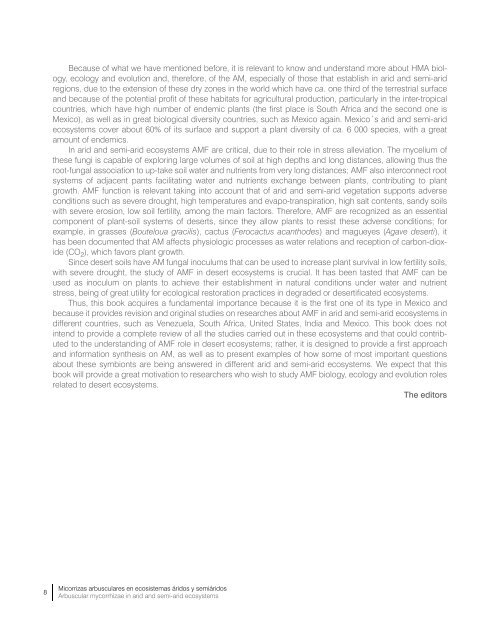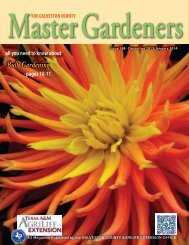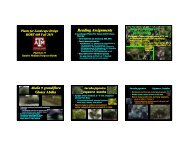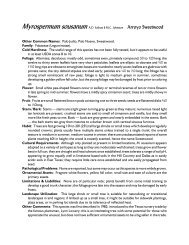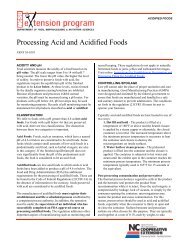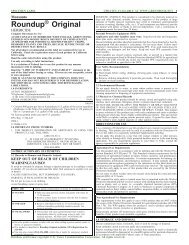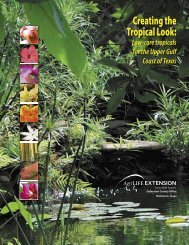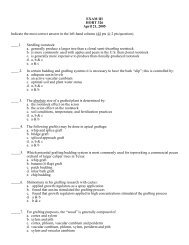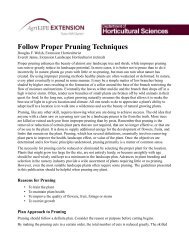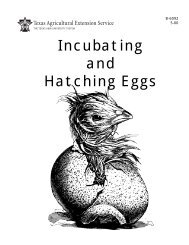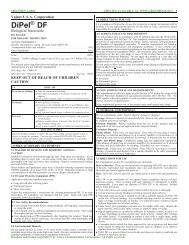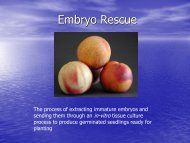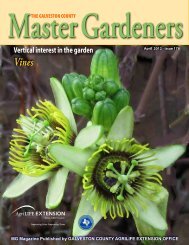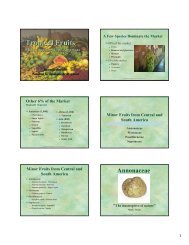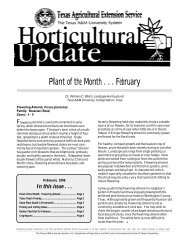Opuntia albicarpa Scheinvar cv. “Reyna” - Aggie Horticulture - Texas ...
Opuntia albicarpa Scheinvar cv. “Reyna” - Aggie Horticulture - Texas ...
Opuntia albicarpa Scheinvar cv. “Reyna” - Aggie Horticulture - Texas ...
Create successful ePaper yourself
Turn your PDF publications into a flip-book with our unique Google optimized e-Paper software.
8<br />
Because of what we have mentioned before, it is relevant to know and understand more about HMA biology,<br />
ecology and evolution and, therefore, of the AM, especially of those that establish in arid and semi-arid<br />
regions, due to the extension of these dry zones in the world which have ca. one third of the terrestrial surface<br />
and because of the potential profit of these habitats for agricultural production, particularly in the inter-tropical<br />
countries, which have high number of endemic plants (the first place is South Africa and the second one is<br />
Mexico), as well as in great biological diversity countries, such as Mexico again. Mexico´s arid and semi-arid<br />
ecosystems cover about 60% of its surface and support a plant diversity of ca. 6 000 species, with a great<br />
amount of endemics.<br />
In arid and semi-arid ecosystems AMF are critical, due to their role in stress alleviation. The mycelium of<br />
these fungi is capable of exploring large volumes of soil at high depths and long distances, allowing thus the<br />
root-fungal association to up-take soil water and nutrients from very long distances; AMF also interconnect root<br />
systems of adjacent pants facilitating water and nutrients exchange between plants, contributing to plant<br />
growth. AMF function is relevant taking into account that of arid and semi-arid vegetation supports adverse<br />
conditions such as severe drought, high temperatures and evapo-transpiration, high salt contents, sandy soils<br />
with severe erosion, low soil fertility, among the main factors. Therefore, AMF are recognized as an essential<br />
component of plant-soil systems of deserts, since they allow plants to resist these adverse conditions; for<br />
example, in grasses (Bouteloua gracilis), cactus (Ferocactus acanthodes) and magueyes (Agave deserti), it<br />
has been documented that AM affects physiologic processes as water relations and reception of carbon-dioxide<br />
(CO 2 ), which favors plant growth.<br />
Since desert soils have AM fungal inoculums that can be used to increase plant survival in low fertility soils,<br />
with severe drought, the study of AMF in desert ecosystems is crucial. It has been tasted that AMF can be<br />
used as inoculum on plants to achieve their establishment in natural conditions under water and nutrient<br />
stress, being of great utility for ecological restoration practices in degraded or desertificated ecosystems.<br />
Thus, this book acquires a fundamental importance because it is the first one of its type in Mexico and<br />
because it provides revision and original studies on researches about AMF in arid and semi-arid ecosystems in<br />
different countries, such as Venezuela, South Africa, United States, India and Mexico. This book does not<br />
intend to provide a complete review of all the studies carried out in these ecosystems and that could contributed<br />
to the understanding of AMF role in desert ecosystems; rather, it is designed to provide a first approach<br />
and information synthesis on AM, as well as to present examples of how some of most important questions<br />
about these symbionts are being answered in different arid and semi-arid ecosystems. We expect that this<br />
book will provide a great motivation to researchers who wish to study AMF biology, ecology and evolution roles<br />
related to desert ecosystems.<br />
The editors<br />
Micorrizas arbusculares en ecosistemas áridos y semiáridos<br />
Arbuscular mycorrhizae in arid and semi-arid ecosystems


